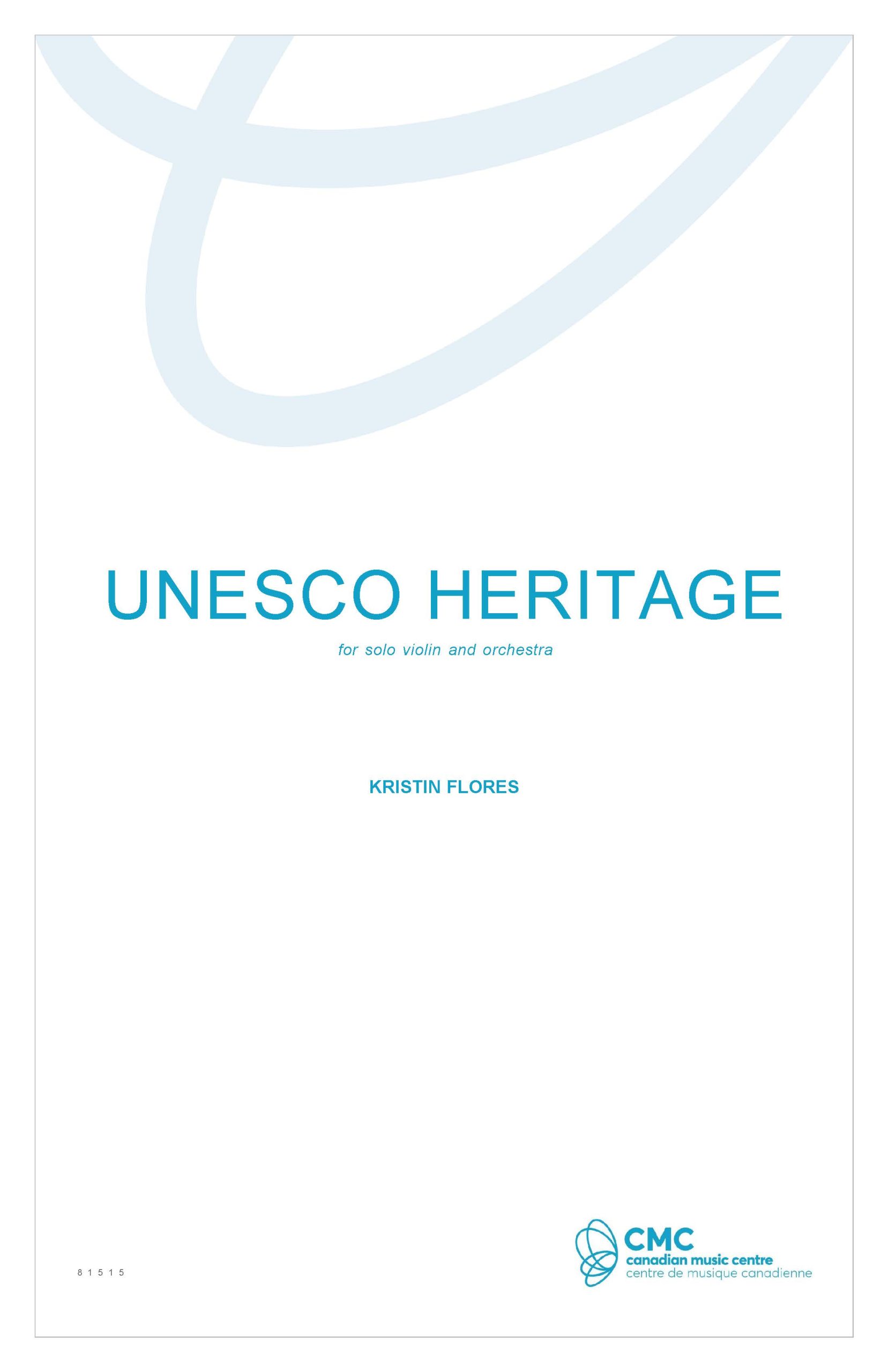This piece for solo violin and orchestra was written for and dedicated to violinist Debra Fast with the creation and premiere performance of this piece by Debra Fast and the Kensington Sinfonia fully supported by the Canada Council for the Arts. Fast has been performing Flores’ solo violin works since the summer of 2020 and a friendship has formed as a result. This piece illustrates Flores’ and Fasts’ favourite UNESCO Heritage Sites through music. The first movement begins with a musical depiction of the Val d’Orcia and the Canadian Rocky Mountain Parks. The music is flowing and lively to describe these regions. This region in Italy is filled with hills, vineyards, cypress trees and olive groves so the music has rolling melodic lines and repetitive rhythms. In contrast, the Canadian Rocky Mountain Parks are illustrated with dominating treble lines in the orchestra and solo violin part while the bass notes portray the base of the mountain range with strong and stable held durations. The second movement depicts the Piazza del Duomo in Pisa and Dinosaur Provincial Park. This movement incorporates the melody Dies Irae, a Gregorian chant, to show the history of the site in Italy. The music of the badlands is portrayed by bass instruments to show the history of the dinosaur bones that are found in the region and the dry climate. The music in this second movement is haunting, devastating and sombre. This movement is slow and contemplative in nature. The third movement displays with music the Rock Drawings at Valcamonica and the Writing-on-Stone Provincial Park. Solo lines flow throughout the orchestration to depict the rivers in these regions. Rhythmic flourishes depict the beauty of the rock art found in both of these regions. The Ancient-Medieval and Indigenous people in these two regions are highlighted with beautiful melodic material. The last and final movement musically interprets Mt. Etna and the Waterton Glacier International Peace Park. Icy waters of the Waterton Lake are illustrated with tremelo and trills while repetitive rhythmic lines portray the glaciers of the past. In this very windy region, there are ascending and descending swirls of melodic material. Mt. Etna is featured with loud explosions in the orchestra and bursting rhythmic lines. The music at times conveys a peaceful demeanor to depict the Waterton’s site name ‘International Peace Park’ to contrast with the outburst of Mt. Etna. This movement is full of energy to end the piece.

